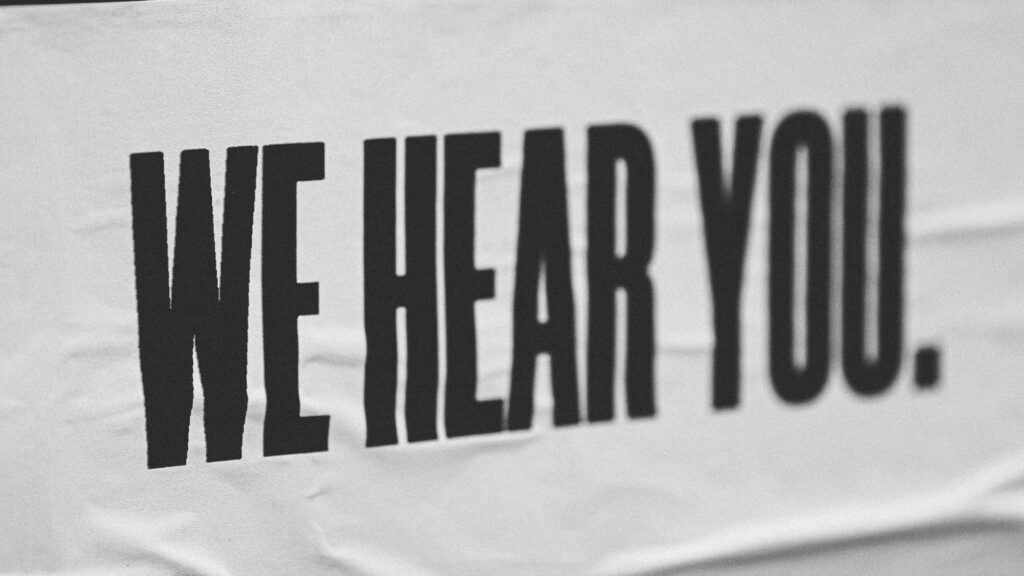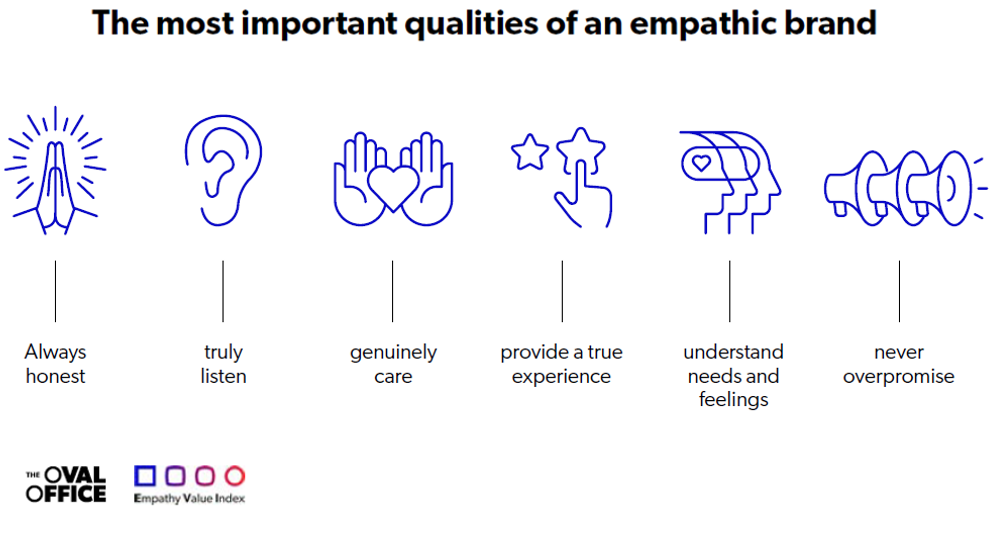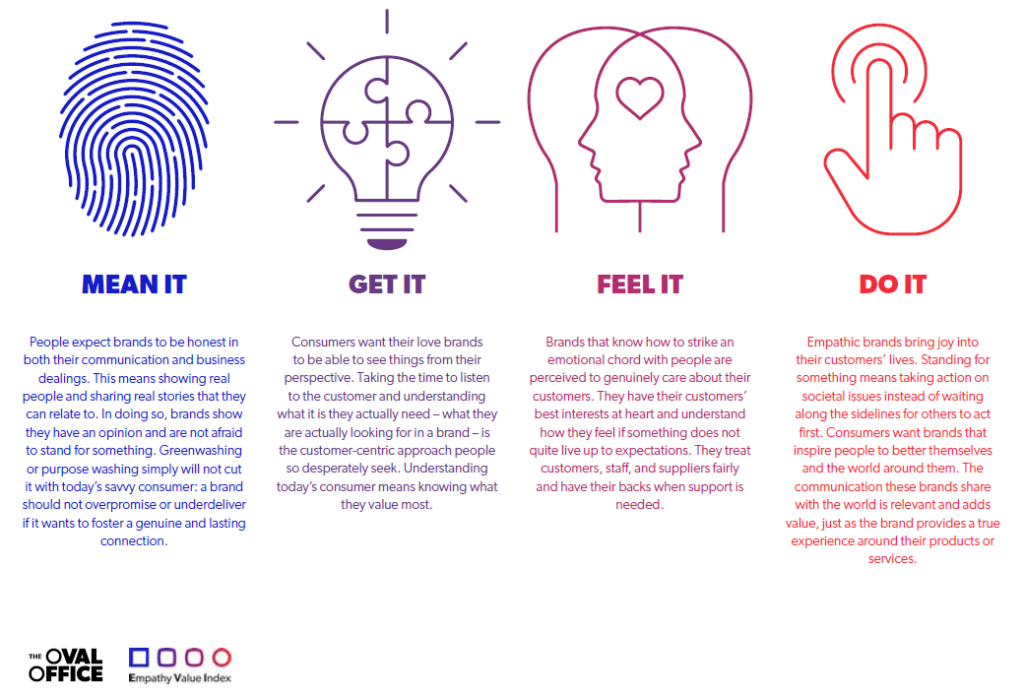The power of (brand) empathy
Reading time: 6 min
- How are you doing? What is currently on your mind? What is important to you? How do you feel?
- Empathy is the basic unit of cultural intelligence
- What does this mean for companies and brands?
- So how do we escape the trap of short-term customer loyalty?
- The Empathy Value Index (EVI)
- Together we create your Empathic Brand World

How are you doing? What is currently on your mind? What is important to you? How do you feel?
We all have a deep-seated need to connect with others. Through honest interest, compassion and interpersonal care, we feel seen and understood by our counterpart. This is how the roots of our relationships grow and only in this way do we lay a foundation of mutual trust.
Reinforced by the ongoing pandemic situation, we learn once again how difficult it is for us to be isolated. How much more laborious it is for us to recognize how the people close to us are really feeling. Over short polls “between door and corner” via smartphone or screen, we miss some important signals of our conversation partner like gestures, facial expressions, body language. Our relationships become shallower because of the circumstances, they lose depth.
Of course, we could simply accept this and blame it on the current crisis situation. In the short term, that might be possible, but in the long run, we will probably become unhappy and lonely until we pursue the need for social closeness. So what can we do to prevent our isolation from occurring in the first place? The magic word is empathy.
Empathy is the basic unit of cultural intelligence
The word empathy comes from the late Greek and loosely translated it means “passion” (Duden). The Brockhaus defines empathy as the “willingness and ability to put oneself in the place of other people’s experiences and to empathize with their feelings and moods.” Prof. Dr. Waldemar Pelz of the Institute for Management Innovation further breaks down the competency into three subcategories:
- Emotional empathy (intuition and feelings),
- Mental empathy (rational understanding) and
- Social empathy (interpersonal dynamics)
If we want to look at a less academic and more empathic interpretation, musician Brian Eno defines: “If anything like a basic unit of cultural intelligence exists, it’s empathy.” What a beautiful allegory. Meeting your fellow human beings with genuine attention and empathy is the key to true, deep connection.
What does this mean for companies and brands?
Businessolver’s 2021 State of the Workplace Empathy Study provides valuable insights into the relevance of empathy as the foundational value of the post-Covid workplace. According to the study, 74% of employees experience empathy in the workplace as a driver of motivation. 84% of CEOs said that empathy leads to better business results overall.
In addition to the relevance of empathy in the context of the organization, the relevance of empathy is also rising sharply in the context of brand management. This is shown by a study of the “2021 Meaningful Brand”, according to which more than 73% of consumer are looking for brands with added value. 75% of consumers have a high willingness to switch and a low brand loyalty. This is especially true of the Millenials and Centennials generations, for whom the question of “why” is very much in focus. In addition, there is an increased skepticism among consumers, which is often reinforced by fake news, social sensationalism, or divisive stories.
We at CONCEPT X have conducted our own survey on the topic of “Factors influencing purchasing decisions”.
These results also clearly show that value-oriented actions (credibility, transparency, environmental protection) of companies have become more relevant, especially in the Corona era.
Which of these criteria have become more important to you when making business purchase decisions in the last twelve months?
So how do we escape the trap of short-term customer loyalty?
Strategically translated, we find that it is essential for the success of brand building to design the brand in a human-centered way and to translate it into the living world of the customers. Empathic branding, then, means acting on a strictly holistic approach and clearly sharpening the brand’s identity. To create a basis for this, marketing managers should listen carefully to the target people, understand their needs and empathize with their expectations of the product or service.
The top priority in the branding process is to improve the lives of customers. One’s own ideas and perceptions or even prejudices play at most a subordinate role in the empathic approach. It is about getting valuable, honest insights from the target group itself, precisely recognizing and taking into account their heart points and pain points, to create a “Meaningful Brand”.

Brand empathy on a large scale demands a clear vision, high commitment and targeted content. Sometimes it also requires a radical change in strategic direction. In this way, companies can build an authentic and lasting relationship with their customers and strengthen customer loyalty.
The Empathy Value Index (EVI)
Our Belgian partner “The Oval Office (TOO)” has developed together with InSites Consulting (ISC) the so-called “Empathy Value Index”. This is the world’s first evidence-based research tool that maps the relationship between empathy and brands. At the core of this tool are four points that map the sum of touchpoints through which the brand promise is made credible, tangible and transparent. What’s behind it:

According to the TOO and ISC study, consumers’ identification with an empathetic brand is up to 4x stronger, compared to brands with a low EVI score. In summary, a high correlation was found between brand empathy and funnel KPIs such as purchase intention and customer loyalty.
Together we create your Empathic Brand World
We, as your experts at CX-Group, have developed a series of workshops that will help you achieve successful empathetic branding. We take the time to get to know you so we can work with you and your target audience to develop a brand identity that inspires and excites your customers. We act as experiential communications consultants who strategically and creatively focus on empathy. Contact us and we will develop a customized relevant approach for you to use the power of empathy for your brand and make it visible. We look forward to hearing from you!
